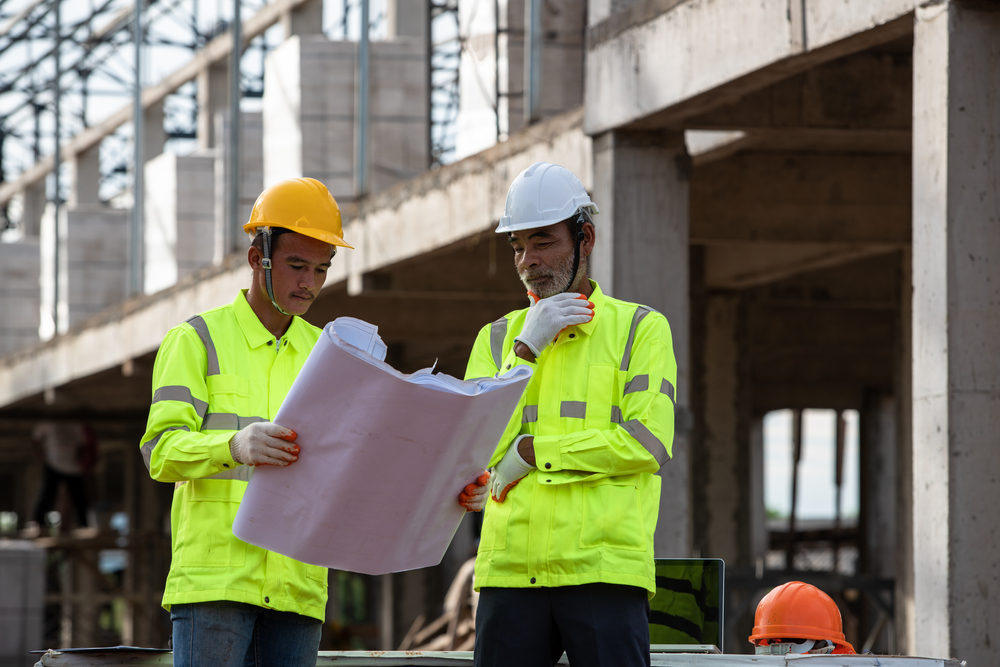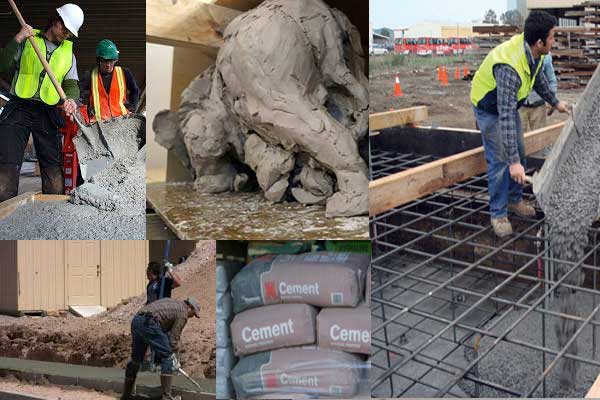West Coast General Engineering concrete foundation: Step-by-Step Guide for Long-Term Structural Success
The Necessary Duty of Concrete Foundation in Structural Stability and Durability
When it pertains to constructing a property, the structure is more crucial than you might think. Concrete foundations give unparalleled toughness and durability, ensuring your framework can hold up against numerous ecological obstacles. Without a solid base, you risk potential issues like shifting or cracking, which can endanger security and value. Understanding the nuances of concrete structures could be the trick to preserving your investment for many years to find. What should you consider following?
Recognizing the Value of Concrete Foundations
Concrete structures are vital to the total stability of any framework, as they give the vital support needed to endure numerous lots and ecological conditions. When you think of constructing a home or an industrial area, the structure is the first point you must consider. It functions as an obstacle against moisture, protecting your home from water damage. A well-placed concrete foundation likewise prevents settling and moving, which can result in splits in wall surfaces and floors. You'll wish to assure that the foundation is properly made and enhanced, as this impacts the longevity of your structure. Additionally, a strong foundation can boost energy effectiveness by minimizing air leaks. Bear in mind, ignoring the importance of a concrete foundation can lead to expensive fixings down the line. Spending in a top quality foundation upfront is important for the honesty and resilience of your framework.
Advantages of Concrete Foundations for Structural Stability
While lots of aspects add to a building's structural honesty, concrete structures offer unrivaled resilience and toughness. You'll appreciate that concrete can withstand severe weather, standing up to both wetness and temperature fluctuations. This resilience implies your structure is much less most likely to experience fracturing or changing in time, which can compromise its safety.Additionally, concrete's intrinsic weight gives a strong base, avoiding motion during natural events like quakes or floods. When you pick a concrete structure, you're likewise deciding for reduced maintenance; unlike timber, it will not rot or attract insects, saving you time and money in repairs.Moreover, concrete's fire resistance supplies included safety and security, ensuring your structure can endure heats without substantial damage. Overall, investing in a concrete structure implies you're prioritizing the long-term stability and stability of your building, making it a smart selection for any type of building and construction project.
Typical Sorts Of Concrete Foundations
When it involves constructing structures, comprehending the common kinds of concrete foundations can help you make informed selections for your job. The most prevalent types include slab-on-grade, crawl room, and full cellar foundations.A slab-on-grade foundation is a basic, cost-efficient alternative, where a thick concrete slab is poured directly on the ground. This kind works well in cozy environments, as it lessens warmth loss.Crawl room structures boost the home slightly above ground, permitting air flow and access to pipes and electrical systems. This layout can help protect against moisture issues.Full basement structures offer added living or storage room while supplying exceptional architectural assistance. They require more excavation and are typically made use of in chillier environments to stop frost heave.
Factors to Take Into Consideration When Creating a Concrete Foundation

Ideal Practices for Setting Up Concrete Foundations
When you're installing a concrete structure, proper site prep work is important to ensure stability (West Coast General Engineering industrial concrete Rancho Cucamonga). You'll additionally require to comprehend reinforcement techniques to boost strength and sturdiness. Lastly, don't neglect the curing process, as it plays an essential function in achieving a solid structure
Website Prep Work Value
It may seem uncomplicated, proper website preparation is important for assuring a solid and resilient concrete structure. Beginning by clearing the location of any kind of debris, plant life, or natural material that might endanger the structure's integrity. Next, analyze the soil type and compaction; you could need to excavate or add products to develop a secure base. Level the ground to guarantee even weight circulation and stay clear of resolving issues in the future. Setting up correct drainage systems is also vital to prevent water accumulation, which can compromise the foundation with time. Mark out the structure's measurements accurately to assist the pouring process. By following these steps, you'll establish the stage for a successful concrete foundation that stands the test of time.
Reinforcement Techniques Discussed
Once the site is properly prepared, the next action in assuring a tough concrete structure includes executing reliable support methods. You must start by utilizing steel rebar, which provides tensile toughness and aids stop splitting. Lay the rebar in a grid pattern, making certain it rises using spacers to keep appropriate coverage. Additionally, take into consideration utilizing wire mesh for extra assistance, particularly in areas based on heavy lots. Do not forget to link the rebar crossways firmly with cable. For larger structures, fiber reinforcement can boost resilience, reducing the threat of shrinking splits. Constantly comply with local structure codes and standards to ensure conformity. By applying these support techniques, you'll greatly improve your foundation's toughness and long life, laying a strong groundwork for your framework.
Curing Process Basics
To assure your concrete foundation treatments properly, it's vital to maintain appropriate moisture and temperature problems instantly after putting. Beginning by covering the surface with a wet burlap or plastic bed linen to retain wetness. This maintains the concrete moisturized, preventing fractures and making certain strength. You ought to likewise keep an eye on the temperature level; optimal healing problems are in between 50 ° F and 90 ° F. If it's too hot, haze the surface on a regular basis to prevent fast dissipation. For cool climate, take into consideration using insulating blankets to maintain warmth. Aim for a curing duration of a minimum of seven days, as this is vital for optimal strength growth. By adhering to these ideal techniques, you'll boost your structure's longevity and long life, making certain structural stability for several years ahead.
Upkeep of Concrete Structures for Longevity
To keep your concrete structure strong and enduring, regular inspections are necessary. You need to also assure effective drainage options are in place to avoid water damage. If you detect any cracks, addressing them immediately will conserve you from bigger problems down the line.

Regular Inspections and Assessments
While normal evaluations and evaluations may appear like a chore, they're vital for preserving the stability get more info of your concrete structure. By regularly looking for cracks, changes, or indicators of wear, you can catch potential issues prior to they intensify into expensive repairs. Look for any kind of water merging around the foundation or uncommon settling, as these can indicate underlying problems. It's additionally sensible to keep an eye on any adjustments in your home's structure, like doors that stick or home windows that don't open smoothly. Maintaining a record of your inspections aids track modifications in time, allowing for aggressive upkeep. Ultimately, these assessments assure your foundation remains steady, supporting the durability and safety of your whole structure. Don't ignore this crucial facet of homeownership!
Efficient Water Drainage Solutions
Regular examinations can reveal concerns like drainage troubles that might jeopardize your concrete structure's stability. To stop water accumulation, ensure your gutters and downspouts straight water far from the foundation. Installing French drains can properly redirect surface and groundwater, decreasing stress on your foundation walls. Additionally, grading the dirt around your home assists guarantee that water streams away, instead than pooling near your foundation.Consider utilizing sump pumps in locations vulnerable to flooding, as they proactively eliminate excess water. Frequently look for obstructions in drainage systems and clear them quickly. You'll secure your structure's honesty and long life by taking these proactive measures. Keep in mind, efficient water drainage solutions are vital for preserving a solid, long lasting concrete structure.
Trigger Fracture Fixes
When you see splits in your concrete structure, resolving them promptly is vital for preserving its durability. Small cracks can quickly evolve into larger concerns, endangering the architectural honesty of your home. Frequently examine your foundation for signs of damages, such as straight or vertical cracks. If you spot any, do not wait-- fix them immediately. You can use epoxy shots or concrete patching compounds, which work for securing splits. Constantly comply with the manufacturer's instructions and take into consideration consulting a specialist for substantial damage. Remember, timely repair work not just improve your foundation's resilience yet additionally save you cash over time by preventing extra substantial fixings down the line. Remain proactive, and your structure will continue to be strong and safe and secure.
Resolving Typical Issues With Concrete Foundations
Concrete structures can deal with numerous problems over time, making it essential to determine and address them immediately. One of the most usual issues is fracturing, which can happen due to temperature changes or settling soil. If you see splits, it's crucial to evaluate their dimension and deepness; small fractures can usually be secured, while bigger ones may need expert evaluation.Water breach is another major worry. Excess dampness can lead to mold growth and architectural degeneration. Warranty proper drain around your foundation to alleviate this threat. In addition, look for signs of shifting or bowing walls, as this can suggest underlying problems with your foundation's stability.Regular examinations are fundamental to catch these problems early. If you spot any concerning signs, don't hesitate to seek advice from a structure specialist. By remaining positive, you can keep the integrity and long life of your concrete structure, assuring your home stays risk-free and safe.
Often Asked Concerns
How Does Soil Kind Influence Concrete Structure Efficiency?
Soil kind greatly affects concrete foundation performance. If you've got expansive clay, as an example, it can cause moving and cracking. Sandy dirt may lead to settling. Recognizing your soil assists ensure a steady structure.
Can Concrete Foundations Be Repaired if Harmed?
Yes, you can repair broken concrete structures. Depending on the extent of the damages, methods like epoxy injection or piece jacking can recover security. It's ideal to consult an expert for reliable services.
What Is the Typical Life-span of a Concrete Foundation?
A concrete structure usually lasts 30 to 100 years, relying on factors like dirt conditions, environment, and upkeep. You'll desire to maintain an eye on it to guarantee it stays in good form throughout its lifespan.
Are There Choice Materials to Concrete for Foundations?
Yes, there are options to concrete for structures, like steel, wood, and even recycled materials. Each choice has one-of-a-kind benefits and downsides, so you should consider your job's specific demands when choosing the ideal product.
How Does Climate Effect Concrete Structure Toughness?
Environment considerably influences concrete foundation sturdiness (Concrete Contractors Rancho Cucamonga). Severe temperatures, moisture, and freeze-thaw cycles can compromise the material, causing fractures and architectural concerns. You should consider local climate conditions when preparing your structure to assure lasting performance